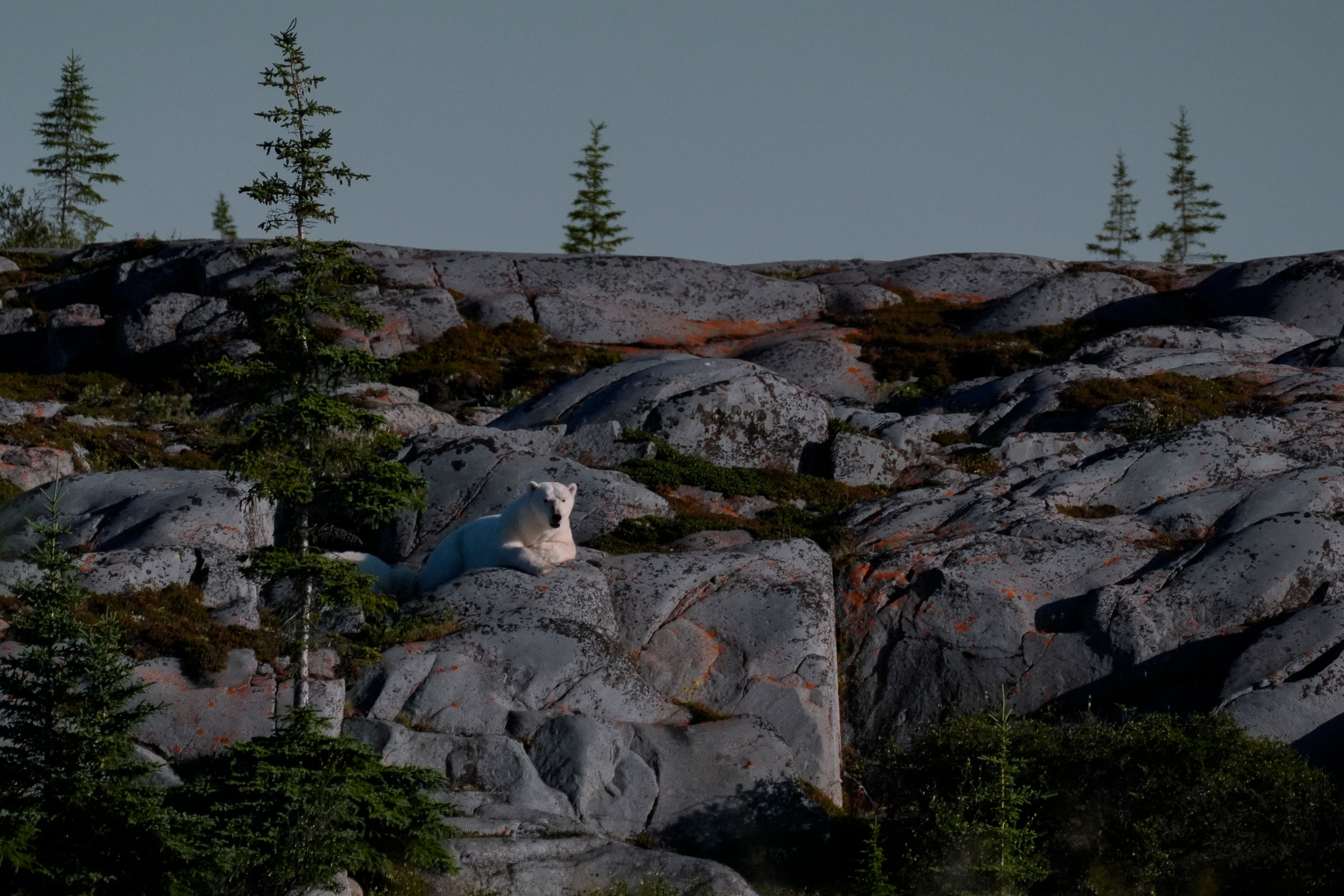Sgt. Ian Van Nest rolls slowly through the streets of Churchill, his truck outfitted with a rifle and a barred back seat to hold anyone he has to arrest. His eyes dart back and forth, then settle on a crowd of people standing outside a van. He scans the area for safety and then quietly addresses the group’s leader, unsure of the man’s weapons.
“How are you today?” Van Nest asks. The leader responds with a wary, “We OK for you here?”
“You’re good. You got a lot of distance there. When you have people disembarking from the vehicle you should have a bear monitor,” Van Nest, a conservation officer for the province of Manitoba, cautions as the tourists gaze at a polar bear on the rocks. “So, if that’s you, just have your shotgun with you, right? Slugs and cracker shells if you have or a scare pistol.”
It’s the beginning of polar bear season in Churchill, a tiny town on a spit of land jutting into Hudson Bay, and keeping tourists safe from hungry and sometimes fierce bears is an essential job for Van Nest and many others. And it’s become harder as climate change shrinks the Arctic sea ice the bears depend on to hunt, forcing them to prowl inland earlier and more often in search of food, according to the International Union for the Conservation of Nature, a group of scientists that tracks how endangered species are.

“You’re seeing more bears because there are more bears on the land for longer periods of time to be seen” and they are willing to take more risks, getting closer to people, said Polar Bears International research and policy director Geoff York. There are about 600 polar bears in this Western Hudson Bay population, about half what it was 40 years ago, but that’s still close to one bear for every resident of Churchill.
Yet this remote town not only lives with the predator next door, but depends upon and even loves it. Visitors eager to see polar bears saved the town from shrinking out of existence when a military base closed in the 1970s, dropping the population from a few thousand to about 870. A 2011 government study calculated that the average polar bear tourist spends about $5,000 a visit, pumping more than $7…
Click Here to Read the Full Original Article at The Independent Travel…
